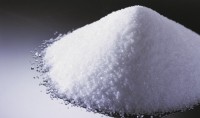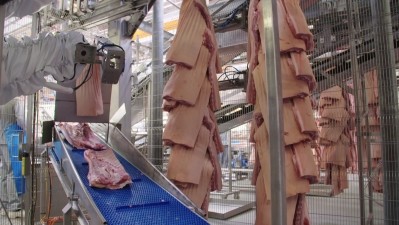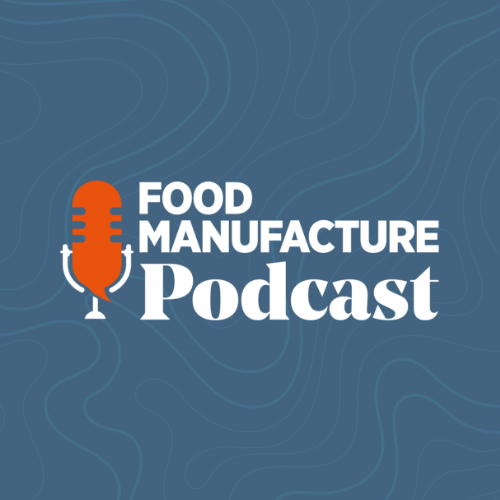Digital feature: long read
Battling food factory health and safety challenges

Last year, the Health and Safety Executive (HSE) reported 1.7m workers had suffered from work-related illness in the 2020/21 period, half of which were from stress, depression or anxiety – a further 28% were musculoskeletal disorders.
HSE chief executive Sarah Albon noted that the report coincided with the first national lockdown and the unprecedent challenges of the pandemic.
“There have been significant impacts on the labour market, which is reflected in our reporting,” said Albon. “We worked differently too in responding to the challenges posed by the pandemic, advising across Government, helping to shape guidance for businesses and implementing our Covid Spot Check programme to ensure workplaces were kept as safe as possible.”
Mental health has been in the spotlight, with more being done to help staff handle issues not as immediately visible as a trapped hand or a skin condition. Manufacturers have increasingly reached out to mental health charities such as Mind to help improve the help and support they can give to these individuals.
One of the first steps toward improving mental health is often improving the culture of health and safety. As Alex Hinton – product innovation manager at health and safety solutions provider Seton – explained, employers have a legal obligation to protect staff from harm, but it’s more than just a ‘tick-box exercise'.
“They need to create a safety culture, where everyone can perform their duties confident that they won’t be exposed to unnecessary risks,” he added.
“Employees who understand and consistently follow best practice are more likely to perform well and take fewer risks. Similarly, someone who is engaged with company life is more inclined to follow health and safety rules, which is why we’d urge health and safety teams to work closely with their HR teams to communicate relevant messages.”
The mental health risk to employees has become prevalent in the past two years, but the factory remains a dangerous place to work if not looked after properly.
Dust explosions
Dust explosions continue to be a major risk in any factory that handles powered and bulk solid materials – grains, sugar, creamer etc. – which become even more of a risk when exposed to static electricity discharge. Research by Extraction Solutions found that sugar has an explosiveness rating of ST 2, which signifies the potential for a strong explosion.
Materials that are particularly susceptible to explosion conveyed at high velocity speeds through metal pipe or ducting can build up an electrostatic charge in the dust and potentially ignite.
While grounding conveyors can help eliminate this problem, conventional open mechanical conveying systems, which utilize many moving parts, can become an ignition source. Bearings and out-of-alignment belt conveyors can be problem areas if they cause sparks or generate heat from friction.
What’s more, even fully enclosed systems – such as pneumatic powered equipment – could create dust clouds as a by-product of the high velocity air used.
With these issues in mind, Gary Schliebs – a process engineer and director of consultation firm Plus One Percent – suggested selecting a conveyor, such as a tubular drag conveyor, that conveys powdered material more slowly and gently.
Tubular cable conveyors employ solid circular discs (flights) that are attached to a cable, which push the product at low speed through the tube without the use of air, reducing the potential for dust cloud formation and preserving product integrity. The systems can move up to 2,000 cubic feet per hour (56m3/hr.) of material with numerous layouts using multiple inlets and outlets.
“Compared to pneumatic systems, tubular cable conveyors use about a quarter of the energy to move product,” said Schliebs. “Tubular conveyors generate minimal dust due to the gentle, low velocity, so there is often no requirement for a dust handling system at the end, such as a bag station used to filter and clean the air.”
By removing high-speed contact or scraping from the conveyor system, the lower speed, lower energy motors of tubular drag conveyors also reduce sparking risk, Schliebs added. The slower velocity also reduces any friction and heat generated to well below an ignition point.
Outside the obvious removal of the threat of explosion, changes to the production line to prevent these materials from coming into contact with sources of ignition can also help improve the respiratory health of employees.
As David Knight, spokesman for Extraction Solutions explained: “Another positive to reducing airborne particles in the kitchen is a reduced risk of irritating your respiratory system. Research from last year shows that bakers and flour confectioners are at a higher risk than other professions of developing asthma.”
Air purification tech
Like any workplace, food and drink businesses can fall prey to any number of airborne infections brought into the factory. This issue has been bought to the fore by the COVID-19 pandemic and subsequent restrictions that were placed on businesses, which included forcing workers to operate at a safe distance from each other.
HSE COVID-19 report
93,000 workers self-reported catching COVID-19 at work
645,000 workers reported that their work-related illness was caused or made worse by the coronavirus pandemic – 70% of these were cases of stress, depression or anxiety.
On the factory line this can be unfeasible, especially at busier times of the year where a much higher number of staff would be on site to help meet demand. While reports of the coronavirus running rampant through food factories have subsided in recent months, the threat of contaminated air being trapped on the factory floor remains an issue.
Developments in air purification technology have ramped up in response to these challenges, with the likes of Switzerland-based Ionair providing new systems to help make indoor air in buildings safer and prevent the spread of airborne viruses.
In a test conducted and verified by the Fraunhofer Institute for Building Physics IBP in Germany, Ionair’s Air Quality System reduced the concentration of virus particles by between 99.49 and 99.59%. The virus under test was the bacteriophage Phi 6, commonly used in environmental studies as a surrogate for human enveloped viruses, including coronaviruses.
Philip Davis, director at Ionair UK, said: “With the growing evidence on airborne transmission routes, we felt it was time to conduct supporting research that can help make our buildings safer, whilst reducing the risk of transmission to its occupants.
“The research conducted by the Fraunhofer Institute for Building Physics now enables us to demonstrate the efficacy of the Ionair system against airborne pathogens. This recent study is another compelling argument of why air purification is needed in our buildings’ infrastructure.”
Other benefits of air purification include the reduction of odours, as well as contaminants such as germs, fungus and pollen – by more than 95% as observed in tests of Ionair’s Air Quality System.
Dermatitis
The idea of bacterial or fungal contamination in factories may make your skin crawl, but it's not the only thing that can prove an irritant to your epidermis. Occupational skin conditions cost Britain 268,000 working days a year, according to the Health & Occupation research Network and the most common type, occupational dermatitis, could be on the increase.
UK safety expert Arco has launched a nationwide campaign to raise awareness of this preventable condition by highlighting the cost it can have on both workers and businesses – from staff losing work due to absence and lower morale and self-esteem, to employers running the risk of bad publicity, reduce productivity and rising costs due to sick days.
“Too often a lack of employee complaints means employers assume dermatitis is a minor risk. But the truth in the silence is workers can feel embarrassed, have a lack of understanding about the condition or fear they could lose their jobs,” said Arco product and procurement manager, Darren Williamson.
“Worse still, underreporting means existing statistics merely represent the tip of the iceberg. We must raise awareness of the help available before employees and employers end up paying the ultimate price.”
With more than one in 10 workers suffering from the disease, for a 250 strong company, that’s 25 members of staff, Williamson added. The average cost to treat an unreported hand health problem is £2,000. In addition, each reported case of dermatitis costs an employer £6,000 on average, excluding compensation, fines and legal fees. For 25 employees, this total cost equates to £200,000.
For something that can cost a business so much, the solution can be quite simple. Cutting down on hand sanitisers – usage of which grew exponentially over the course of the COVID-19 pandemic – can help prevent damage to hands.
Having the right skincare programme – a solution offered by Arco – in place can also reduce and even eliminate the risk of dermatitis. Through training and awareness programmes to help change behaviour and ensure compliance.
From the hidden illnesses to the ones clear to see by the naked eyes, health and safety in the factory is more than just making sure staff don’t get injured by machinery. A culture of health and safety in the factory plays a key role in keeping bodies and minds safe, but only time will tell if the fallout of the pandemic will have a lasting effect on these issues and whether or not employers are up to the challenge.

















